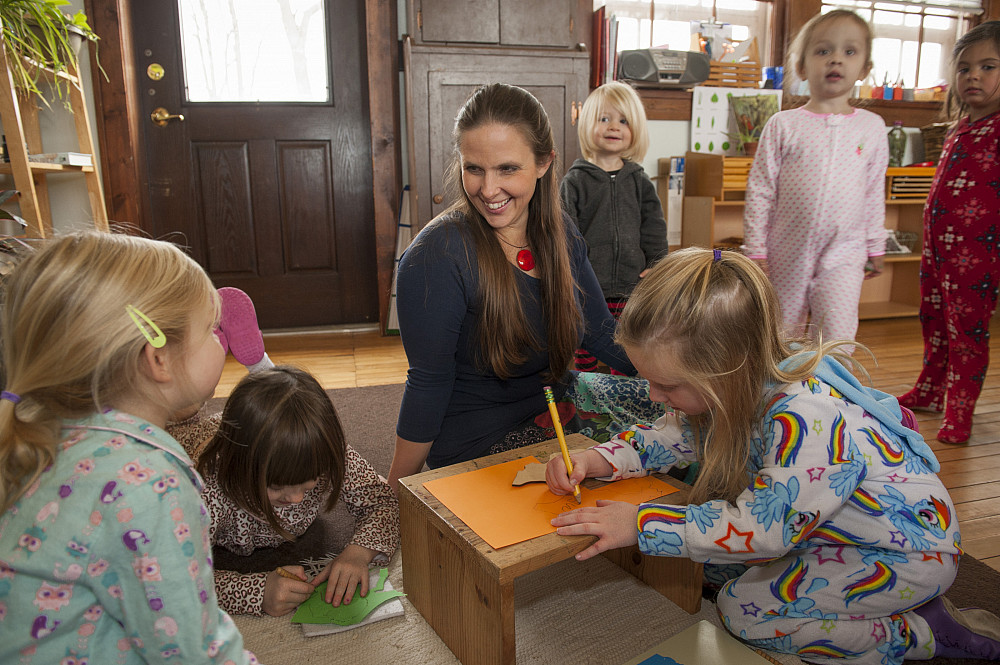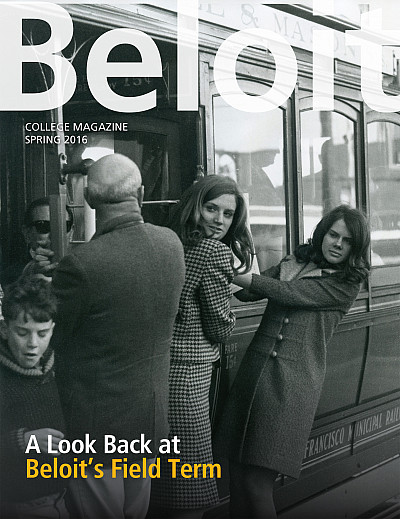From College to Kindergarten
But some might be moving rocks and logs around or playing in a big sandpit. Others could be painting, counting, or learning to read. “They can be upstairs, downstairs, inside, outside—wherever they want to be,” Katzenmeyer explains.
This freedom is part of the structure of Montessori schooling, a unique educational system created in the early 1900s by Italian teacher and physician Maria Montessori. The Montessori system centers on the idea that children should be able to learn in a way that best suits their individual needs.

Katzenmeyer’s Montessori connection began when she was working on her master’s degree in early childhood education at the University of Colorado-Denver while expecting her second child and searching for a preschool for her 3-year-old daughter. The family settled on a Montessori school a block away from their house. Katzenmeyer recalls being “just blown away by the beauty of the classrooms, how nature-focused everything was, and how the children were very independent.” This led her to undertake training to become a Montessori teacher herself and to start planning to open a school of her own. As fate would have it, a century old, former one-room schoolhouse went up for sale right around the time the family moved back to Madison, Wis. Toad Hill Montessori School opened its doors on September 1, 2005. “It all just kind of fell into place,” Katzenmeyer recalls.
Since then, she has enrolled more than 100 students, ranging in ages from 2 to 6—a number of them the children of Madison-based fellow Beloit alumni. Currently, the school has 28 students, three full-time teachers (including Katzenmeyer, known as “Ms. Beckie”), a part-time teacher, and a student teacher. All are trained to guide the children further in their natural interests while also helping them with struggles. Katzenmeyer describes their approach this way: “We’ll help you if this is what you want to do.”
A unique feature of Toad Hill Montessori is a massive “outdoor classroom” where students can learn about nature firsthand. One of the longstanding school traditions is the counting of cherries during their growing season. One year, a girl asked Katzenmeyer what the record was for the most cherries picked, then set her mind on surpassing it. “She turned into this little project manager of this record-breaking, 1,000 cherry day,” Katzenmeyer recalls.
This focus on immersive engagement is key, whether the kids are learning about colors or international history. For Katzenmeyer, a double major in modern languages and art history, with a minor in museum studies at Beloit, it seemed only natural to use interactive means to introduce the kids to a wider world. She often sets aside time to examine cultural pieces, from Guatemalan textiles to Indian saris, and she orchestrates frequent trips to museums. “I think it helps the children get a more complete vision of their world, too,” she says, recalling Beloit’s similar teaching philosophy and emphasis on contextualizing. “Beloit really helped me make sense of a Montessori classroom because of what I had to do in those classes for four years.”




